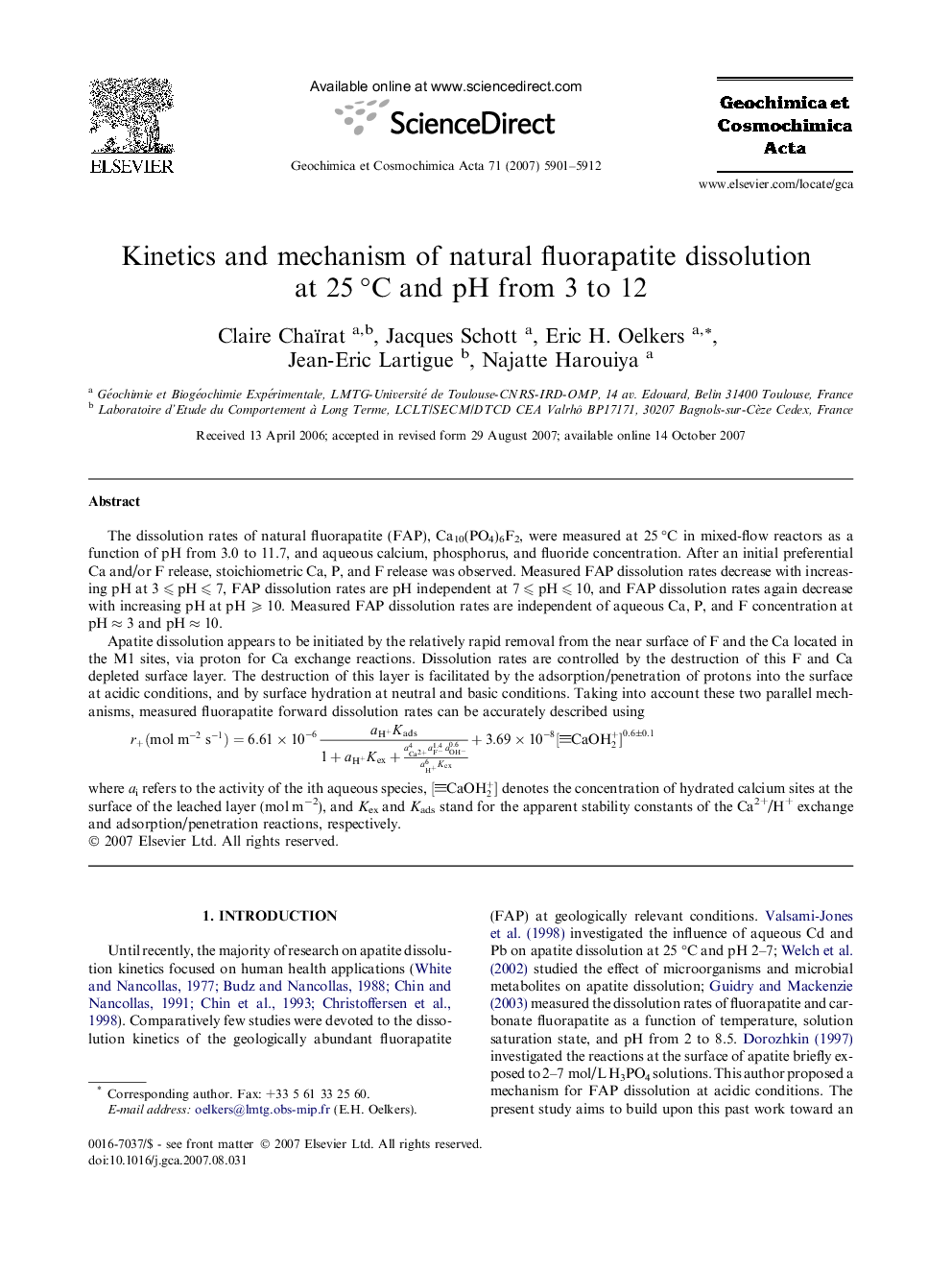| کد مقاله | کد نشریه | سال انتشار | مقاله انگلیسی | نسخه تمام متن |
|---|---|---|---|---|
| 4704434 | 1352912 | 2007 | 12 صفحه PDF | دانلود رایگان |

The dissolution rates of natural fluorapatite (FAP), Ca10(PO4)6F2, were measured at 25 °C in mixed-flow reactors as a function of pH from 3.0 to 11.7, and aqueous calcium, phosphorus, and fluoride concentration. After an initial preferential Ca and/or F release, stoichiometric Ca, P, and F release was observed. Measured FAP dissolution rates decrease with increasing pH at 3 ⩽ pH ⩽ 7, FAP dissolution rates are pH independent at 7 ⩽ pH ⩽ 10, and FAP dissolution rates again decrease with increasing pH at pH ⩾ 10. Measured FAP dissolution rates are independent of aqueous Ca, P, and F concentration at pH ≈ 3 and pH ≈ 10.Apatite dissolution appears to be initiated by the relatively rapid removal from the near surface of F and the Ca located in the M1 sites, via proton for Ca exchange reactions. Dissolution rates are controlled by the destruction of this F and Ca depleted surface layer. The destruction of this layer is facilitated by the adsorption/penetration of protons into the surface at acidic conditions, and by surface hydration at neutral and basic conditions. Taking into account these two parallel mechanisms, measured fluorapatite forward dissolution rates can be accurately described usingr+(molm-2s-1)=6.61×10-6aH+Kads1+aH+Kex+aCa2+4aF-1.4aOH-0.6aH+6Kex+3.69×10-8[CaOH2+]0.6±0.1where ai refers to the activity of the ith aqueous species, [CaOH2+] denotes the concentration of hydrated calcium sites at the surface of the leached layer (mol m−2), and Kex and Kads stand for the apparent stability constants of the Ca2+/H+ exchange and adsorption/penetration reactions, respectively.
Journal: Geochimica et Cosmochimica Acta - Volume 71, Issue 24, 15 December 2007, Pages 5901–5912